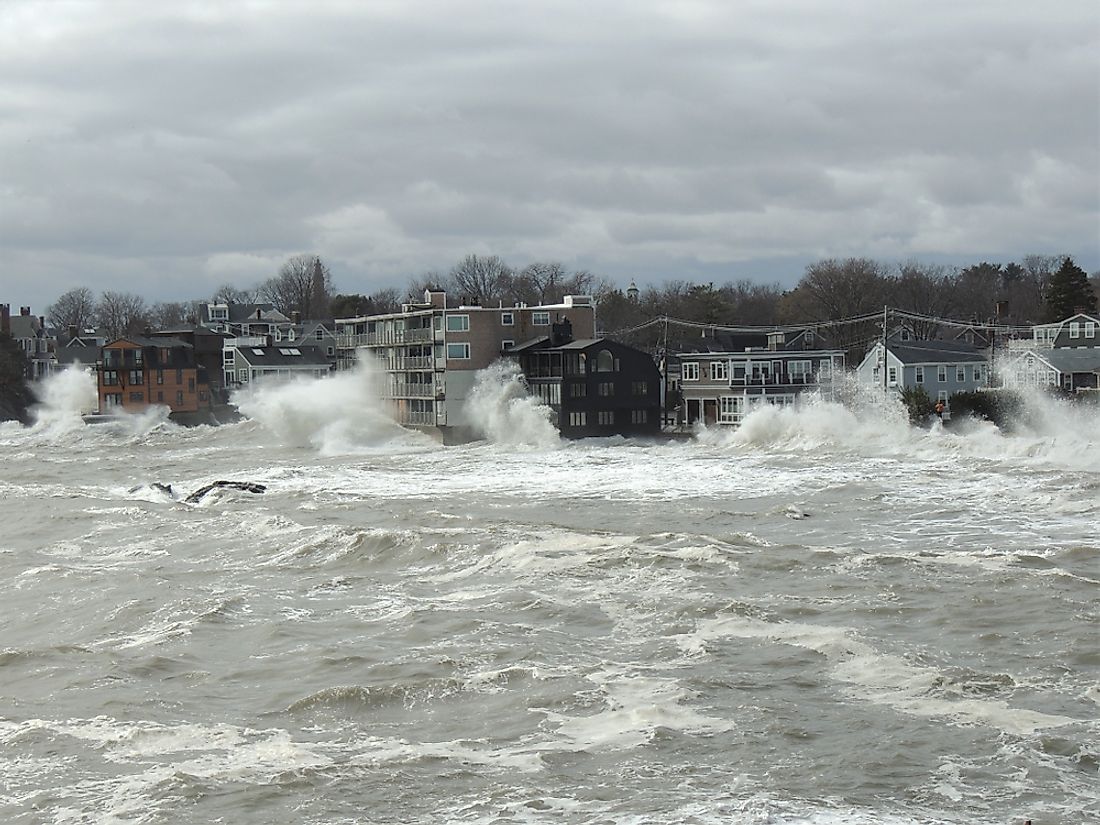What is a Storm Surge?

A storm surge is an abnormal but temporary rise in the sea level. The rise is caused by a tropical storm especially a hurricane or a typhoon. The intensity and severeness of the storm surge depends on the strength of the tropical storm, the orientation of the shoreline and the local bathymetry. Storms displace massive amounts of ocean water inland causing floods and damages along the coast.
What Causes a Storm Surge?
The relationship between the ocean’s surface and the winds are the primary cause of a storm surge. When winds are stronger, the water level rises higher and vice versa. Water is pushed to the direction the wind is flowing to. The rotation of the earth causes the winds to move to the right in the northern hemisphere and towards the left in the southern hemisphere in what is known as the Coriolis Effect. If a tropical storm forms in the northern hemisphere, the storm surge will be intense in the right forward part of the storm, and the left-forward section in the southern hemisphere. Atmospheric pressure also contributes to the intensity of storm surges because it is higher at the edges than at the center thus forcing the sides to bulge. A storm surge is more severe during the high tide when the water level can rise as high as 33 feet and cause more damage, especially in shallow coastlines.
Effect on Coastal Communities
Storm surges are a potentially dangerous hazard for coastal communities in both tropical and subtropical regions. The northern hemisphere is likely to experience a storm surge during the late summer months of July and August while the southern hemisphere experiences the same between January and February when the ocean is warmest. Tropical storms are frequent along the gulf coast of the United States, Bangladesh, and northwestern Australia. When the storm reaches land, the accompanying storm surge floods the surrounding area. In fact, storm surges cause more damage and deaths during a storm than hurricanes. In 1900, a hurricane killed over 6,000 people in Galveston, Texas. 70 years later the Bhola Cyclone killed a half a million people in Bangladesh. In 2005, Hurricane Katrina destroyed property worth $108 billion and killed nearly 1,850 people, half of who drowned.
Minimizing the Effects of Storm Surges
Hurricanes and cyclones are natural disasters that are too extreme to prevent. The most advisable way to reduce adverse effects of a storm surge is to vacate its path before it makes contact. Meteorologists predict the occurrence of these disasters by analyzing weather patterns in the ocean and mapping out the route the hurricane is likely to follow. Warnings are issued out to those who are likely to be affected days before the hurricane makes impact. Wetlands also reduce the effects of the cyclone by acting as sponges that absorb the energy of the tropical cyclone. Swamps, mudflats, and estuaries along the coast should, therefore, be protected.











